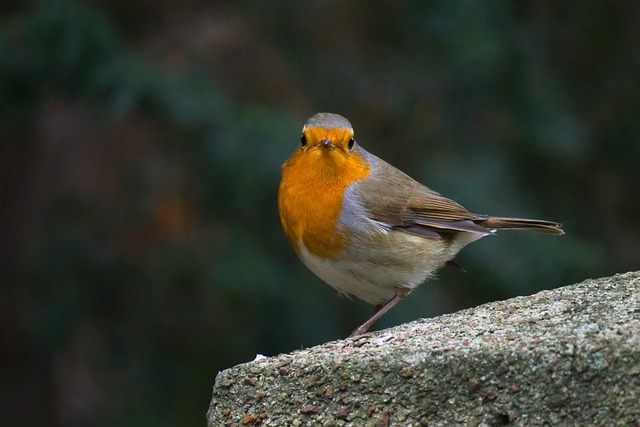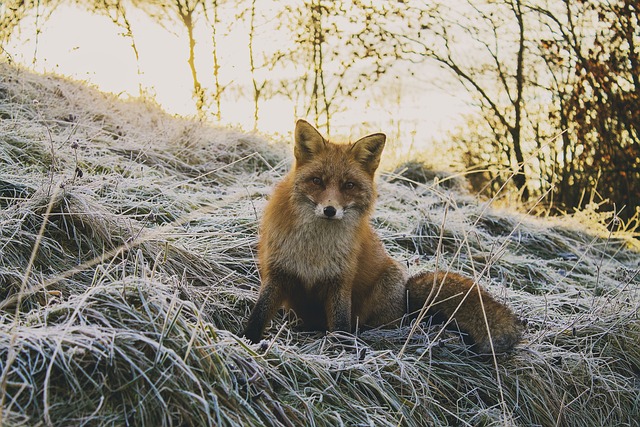Commercial Wildlife Solutions offers professional services for managing wildlife interactions on business properties, including safe capture and relocation, preventative measures, habitat modifications, and restoration projects. In urban settings, professional wildlife removal services are crucial for maintaining balanced ecosystems alongside human habitats, addressing property damage and public health concerns. Businesses in commercial settings benefit from prompt wildlife management to prevent property damage, ensure safety, and comply with regulations. Ethical practices, such as non-lethal deterrents and collaboration with conservation groups, promote humane and responsible wildlife removal. Technological innovations and sustainable methods are transforming the future of urban wildlife management, emphasizing effective yet eco-friendly solutions.
“Uncovering Comprehensive Solutions: Navigating Commercial Wildlife Management
In today’s bustling urban landscapes, understanding the intricate relationship between businesses and wildlife is paramount. This article delves into the world of Commercial Wildlife Solutions, exploring strategies for effective wildlife removal in diverse settings. From urban environments to common commercial encounters, we dissect the impact and ethical considerations.
We present a detailed overview, highlighting successful cases and future innovations, offering a holistic look at humane wildlife control methods while adhering to legal frameworks. Discover how these solutions revolutionize management practices.”
Understanding Commercial Wildlife Solutions: A Comprehensive Overview

Commercial Wildlife Solutions refers to a range of professional services designed to address interactions between businesses and wildlife. This includes situations where wildlife has entered commercial properties, causing potential damage or safety hazards. Understanding these solutions is crucial for both business owners and wildlife enthusiasts. Effective wildlife removal involves careful assessment, safe capture, and humane relocation, ensuring minimal disruption to the local ecosystem.
These services go beyond mere removal; they encompass prevention strategies, habitat modifications, and even restoration projects. By employing experienced professionals, businesses can navigate complex wildlife-human conflicts safely and responsibly. This comprehensive approach not only protects commercial assets but also promotes a harmonious relationship with the natural world, benefiting both operations and local biodiversity.
The Role of Wildlife Removal in Urban Environments

In urban environments, wildlife removal plays a crucial role in maintaining balanced and safe ecosystems alongside human habitats. As cities expand and fragment natural landscapes, wildlife often finds its way into metropolitan areas, seeking food, shelter, or simply exploring new territories. This can lead to various challenges, from potential property damage caused by animals searching for accommodation to public health concerns related to the transmission of diseases. Professional wildlife removal services step in to address these issues humanely and effectively.
Skilled technicians employ a range of strategies, including live trapping and relocation, exclusion methods, and habitat modification, to ensure that wildlife is safely removed from urban settings while minimizing stress to the animals. These practices not only protect homes and businesses but also foster a harmonious coexistence between humans and wildlife, allowing both to thrive in their respective domains.
Common Wildlife Encounters in Commercial Settings and Their Impact

In commercial settings, wildlife encounters are more common than one might think, and their impact can be significant. From birds nesting in buildings to rodents infiltrating food storage areas, these interactions often lead to costly damage and potential health hazards. For instance, bird droppings can corrode structures and contaminate air ducts, while rodent activity can cause structural damage and pose risks of disease transmission.
Effective wildlife management is crucial for maintaining a safe and efficient commercial environment. Professional wildlife removal services play a vital role in mitigating these issues by employing humane and eco-friendly techniques to resolve encounters. By addressing wildlife infestations promptly, businesses can prevent extensive damage, ensure the well-being of employees and customers, and maintain compliance with local regulations related to Wildlife Removal.
Ethical Considerations in Wildlife Management for Businesses

When businesses venture into the realm of wildlife management, it’s crucial to navigate ethical considerations surrounding wildlife removal. Many companies now recognize the importance of humanely and responsibly addressing wildlife conflicts, ensuring their practices are in line with conservation efforts and animal welfare standards. This shift is particularly notable in industries that directly interact with wildlife, such as hospitality, real estate, and construction.
Ethical management involves finding balanced solutions that benefit both businesses and wildlife. For instance, instead of resorting to lethal wildlife removal methods, non-lethal deterrents or relocation strategies can be employed. Companies are also increasingly collaborating with local conservation groups and experts to implement sustainable practices that minimize disruptions to natural habitats and ecosystems while maintaining a safe and healthy environment for both animals and humans.
Effective Strategies for Humane Wildlife Control

Effective wildlife control is a delicate balance between managing human-wildlife conflicts and preserving ecological harmony. The goal should always be humane Wildlife Removal, ensuring no harm comes to the animals while addressing their presence in areas where they are not desired. One of the most successful strategies involves habitat modification, where adjustments to the environment are made to discourage wildlife without causing them distress. This can include securing trash cans, trimming vegetation to reduce shelter, and installing deterrents like motion-activated lights or scent repellents.
Another powerful approach is exclusion, physically blocking wildlife access to areas they tend to occupy. This may involve sealing entry points in buildings, using sturdy fencing around gardens or farms, or installing one-way doors to allow animals to escape but prevent re-entry. These methods not only protect property but also promote peaceful coexistence between humans and wildlife, fostering an understanding that sharing spaces is possible with the right strategies in place.
Legal Frameworks and Regulations Governing Wildlife Removal Services

The legal frameworks surrounding wildlife removal services vary across regions, reflecting a delicate balance between conservation efforts and addressing human-wildlife conflicts. These regulations are designed to ensure ethical practices in managing and removing wildlife, particularly as the demand for such services grows with urban expansion and changing land uses. Each country or region has its own set of laws and guidelines that dictate when, how, and by whom wildlife can be removed from private properties or public lands.
Permits and licenses are often required for professional wildlife removal, ensuring that only authorized individuals or companies can conduct such operations. These regulations aim to prevent the unauthorized taking of wildlife, protect endangered species, and maintain ecological balance. Compliance with these legal frameworks is crucial for commercial wildlife solutions providers, as it not only ensures their operational legitimacy but also contributes to the sustainable management of local wildlife populations.
Case Studies: Successful Implementation of Commercial Wildlife Solutions

In the realm of commercial wildlife solutions, several case studies highlight successful implementations that have revolutionized managing human-wildlife conflicts. One notable example involves a bustling metropolis grappling with invasive species disrupting local businesses. Through a collaborative effort between wildlife experts and urban planners, a comprehensive strategy was devised. This involved advanced Wildlife Removal techniques, habitat modification, and community education programs. The result? A significant reduction in conflict cases, improved business operations, and enhanced coexistence between residents and the local fauna.
Another successful story is set in a vibrant tourist destination where wild animals were attracting unwanted attention—disrupting both tourism and local economies. Commercial wildlife solutions specialists stepped in, implementing eco-friendly removal methods and strategic habitat restoration. By addressing the root causes of human-wildlife conflict, this approach not only solved immediate issues but also fostered a more harmonious relationship between humans and wildlife in the long term, boosting both the tourist industry and local businesses.
Future Trends and Innovations in the Field of Wildlife Management for Commercial Spaces

The future of wildlife management in commercial spaces is poised for significant advancements, driven by evolving technologies and a growing emphasis on sustainable practices. One prominent trend is the integration of innovative tools and techniques for effective Wildlife Removal. This includes the use of advanced sensors, drones, and smart surveillance systems to monitor and manage animal populations in urban environments. For instance, motion-activated cameras and acoustic sensors can detect and track wildlife activity, enabling professionals to implement targeted interventions while minimizing disruptions.
Additionally, there’s a rising interest in eco-friendly and non-lethal methods for managing wildlife interactions. These approaches prioritize the well-being of both animals and humans, focusing on deterrents, habitat modifications, and controlled relocation. With advancements in research and technology, we can expect more sophisticated solutions to emerge, addressing the complex challenges posed by increasing urbanization and its impact on wild animal habitats.
